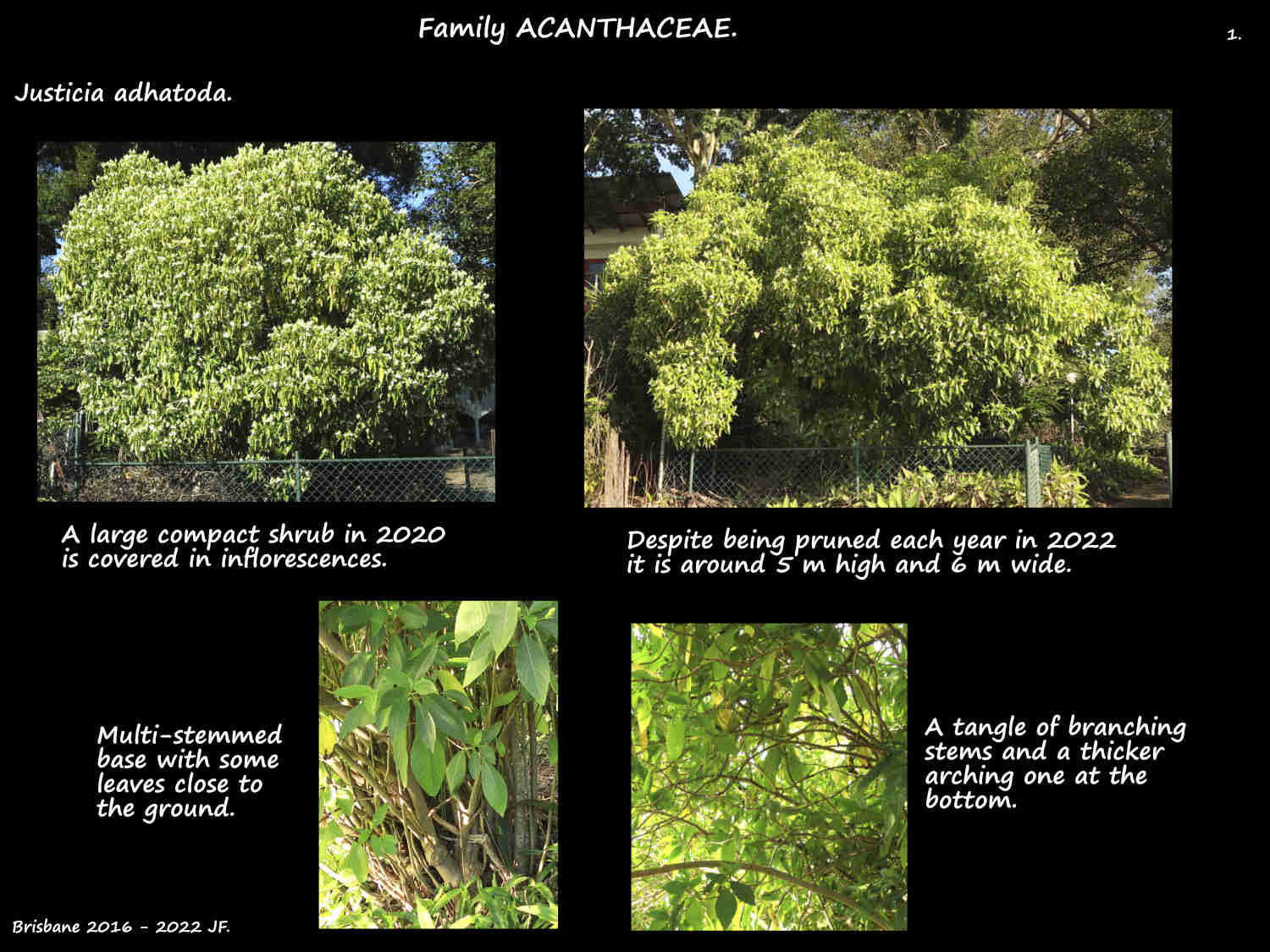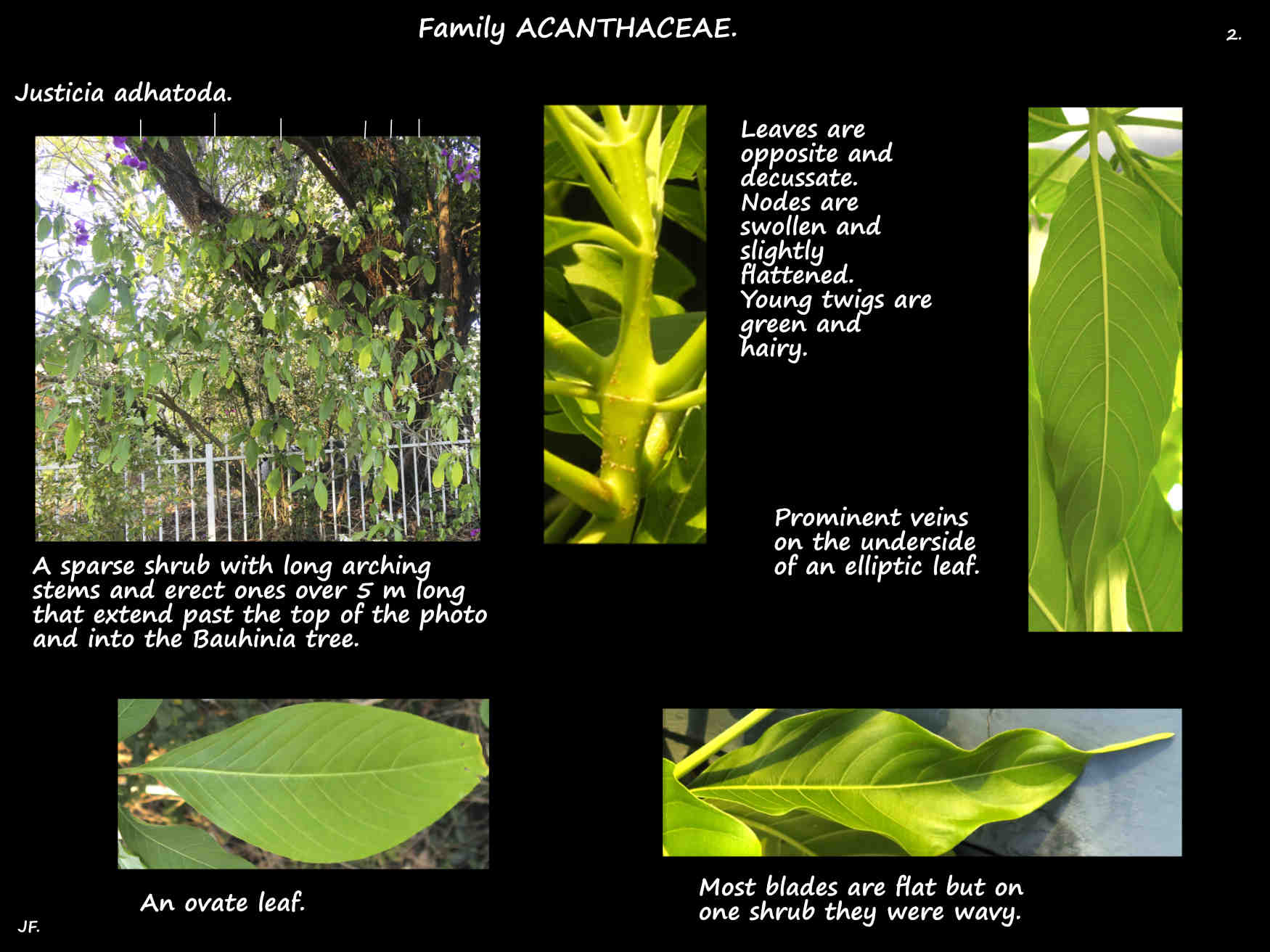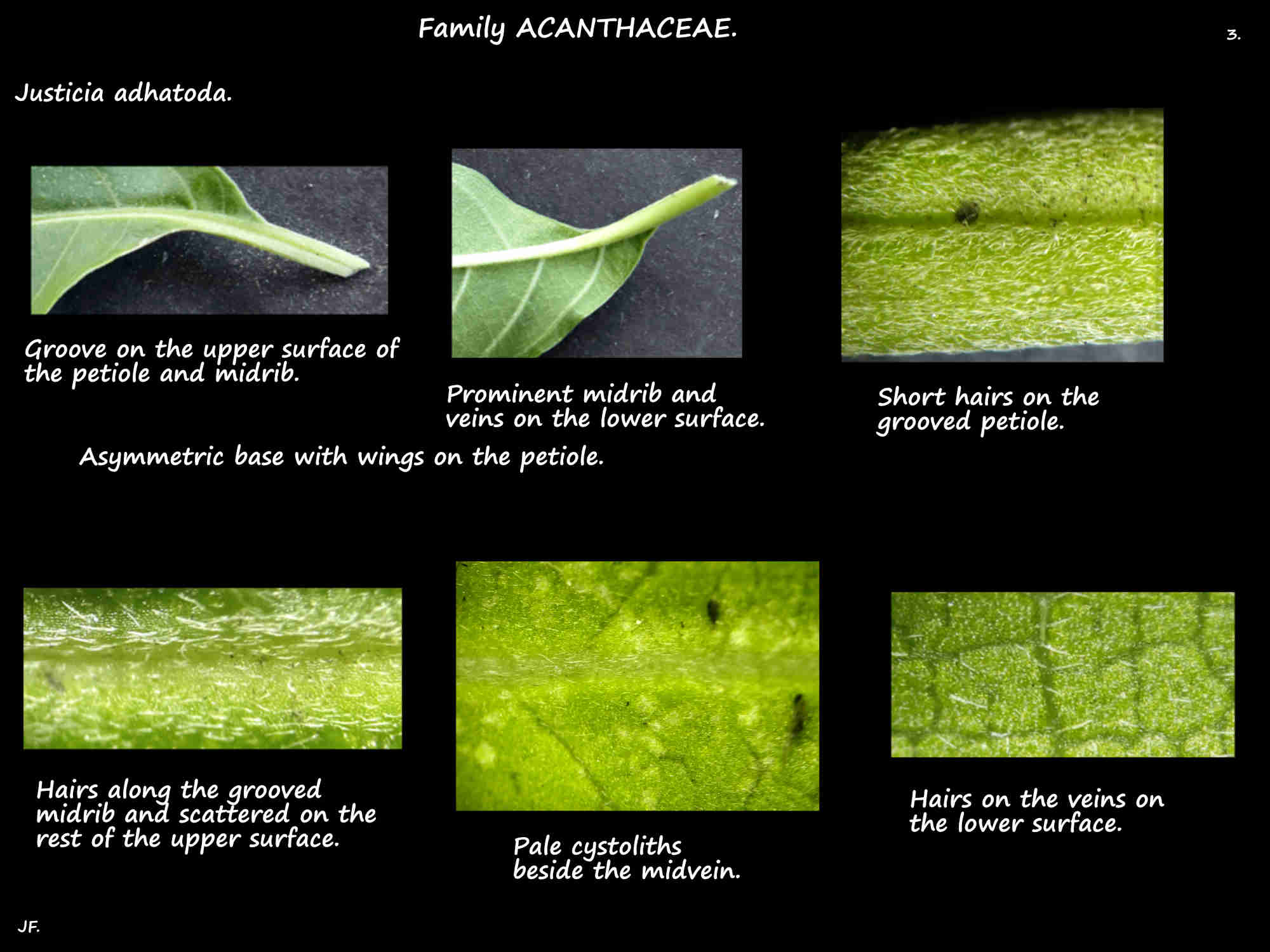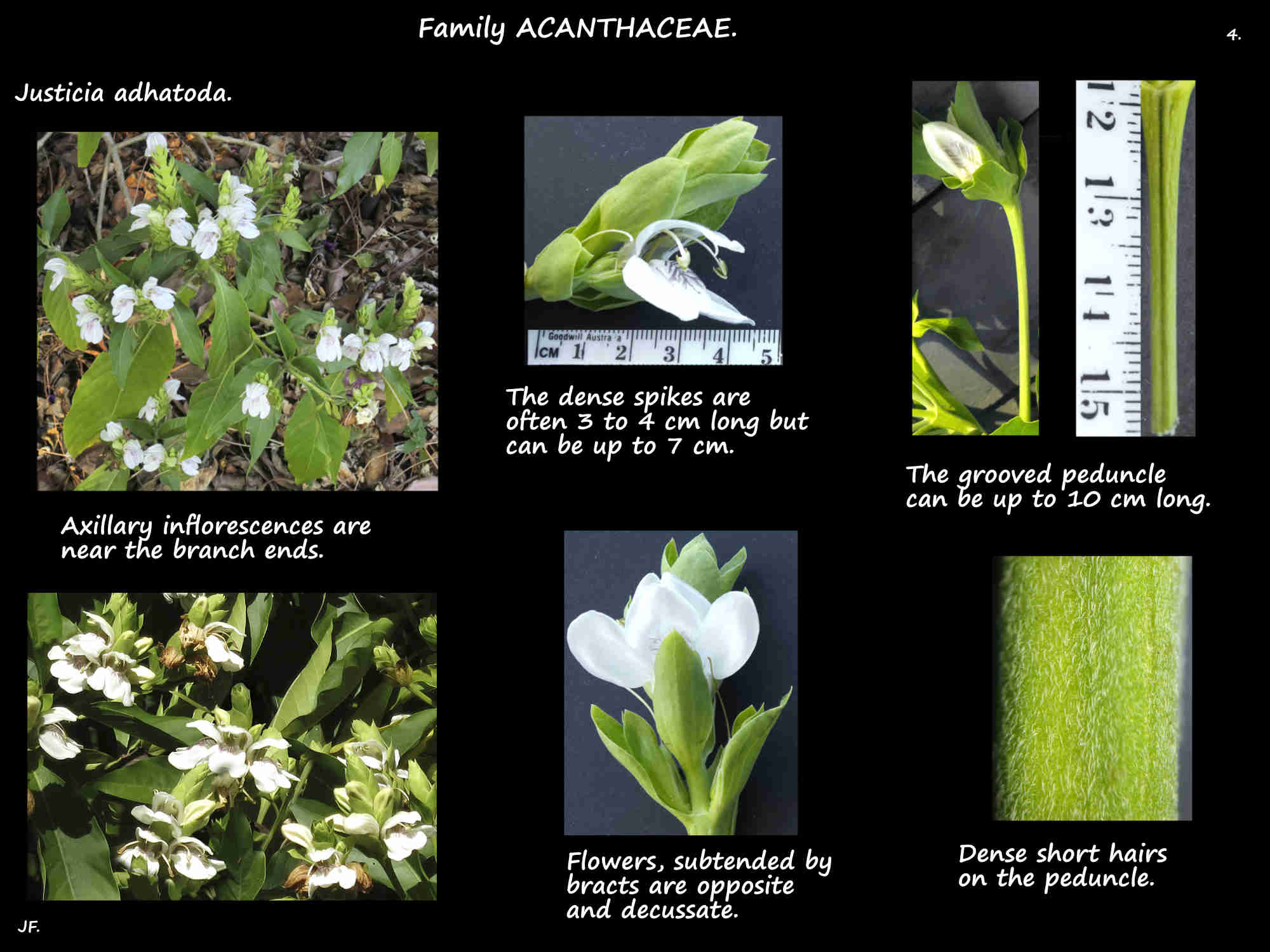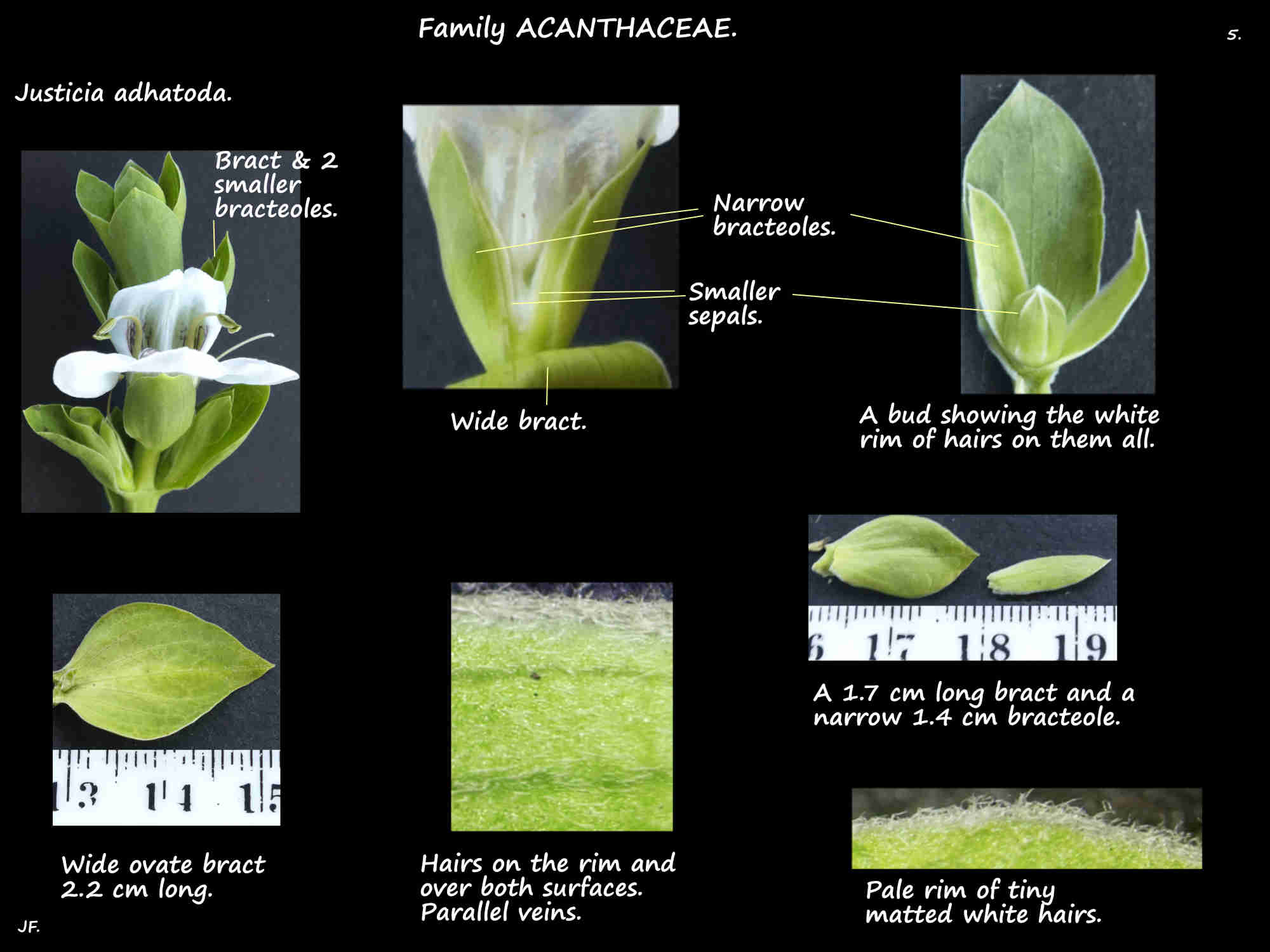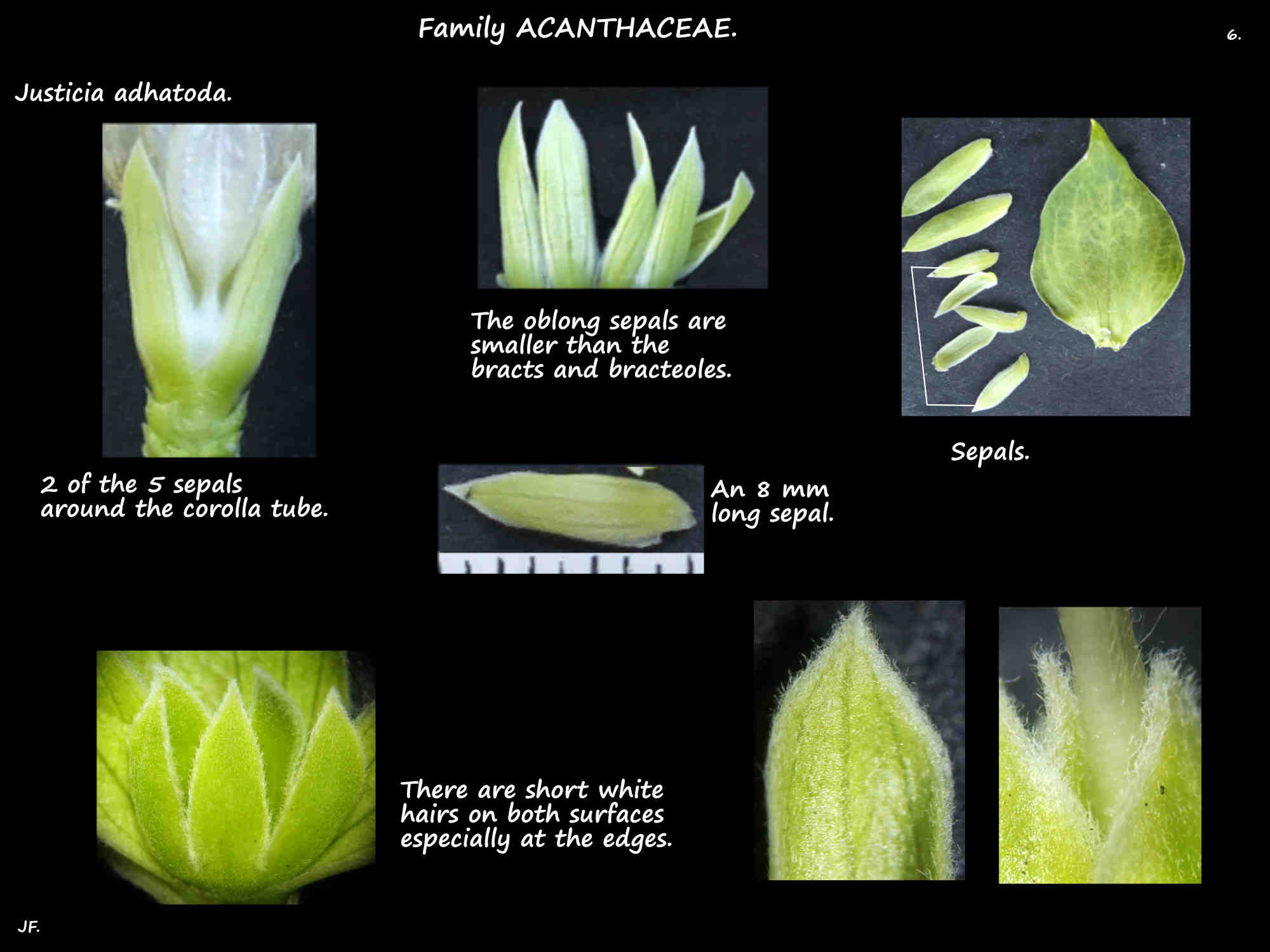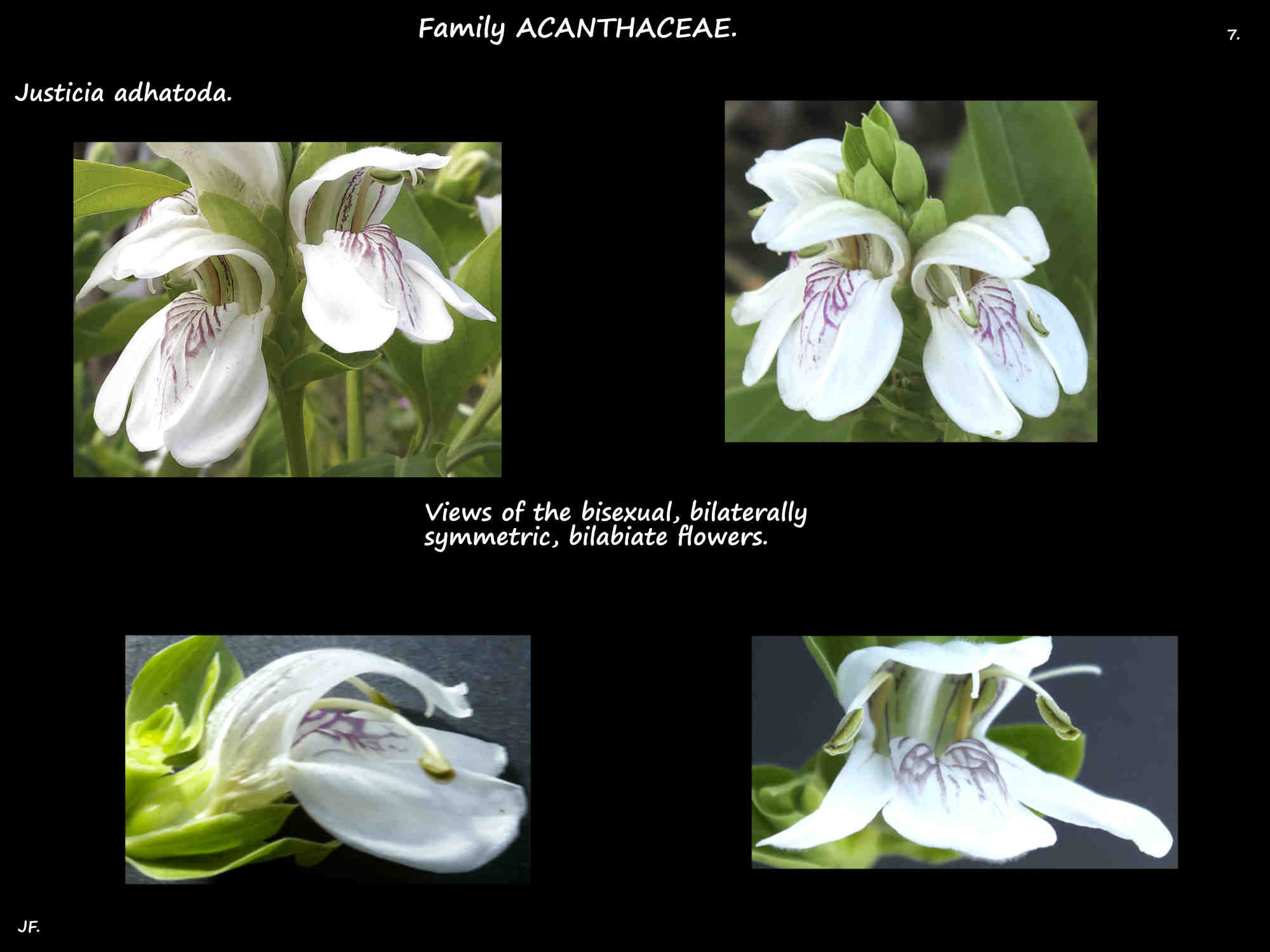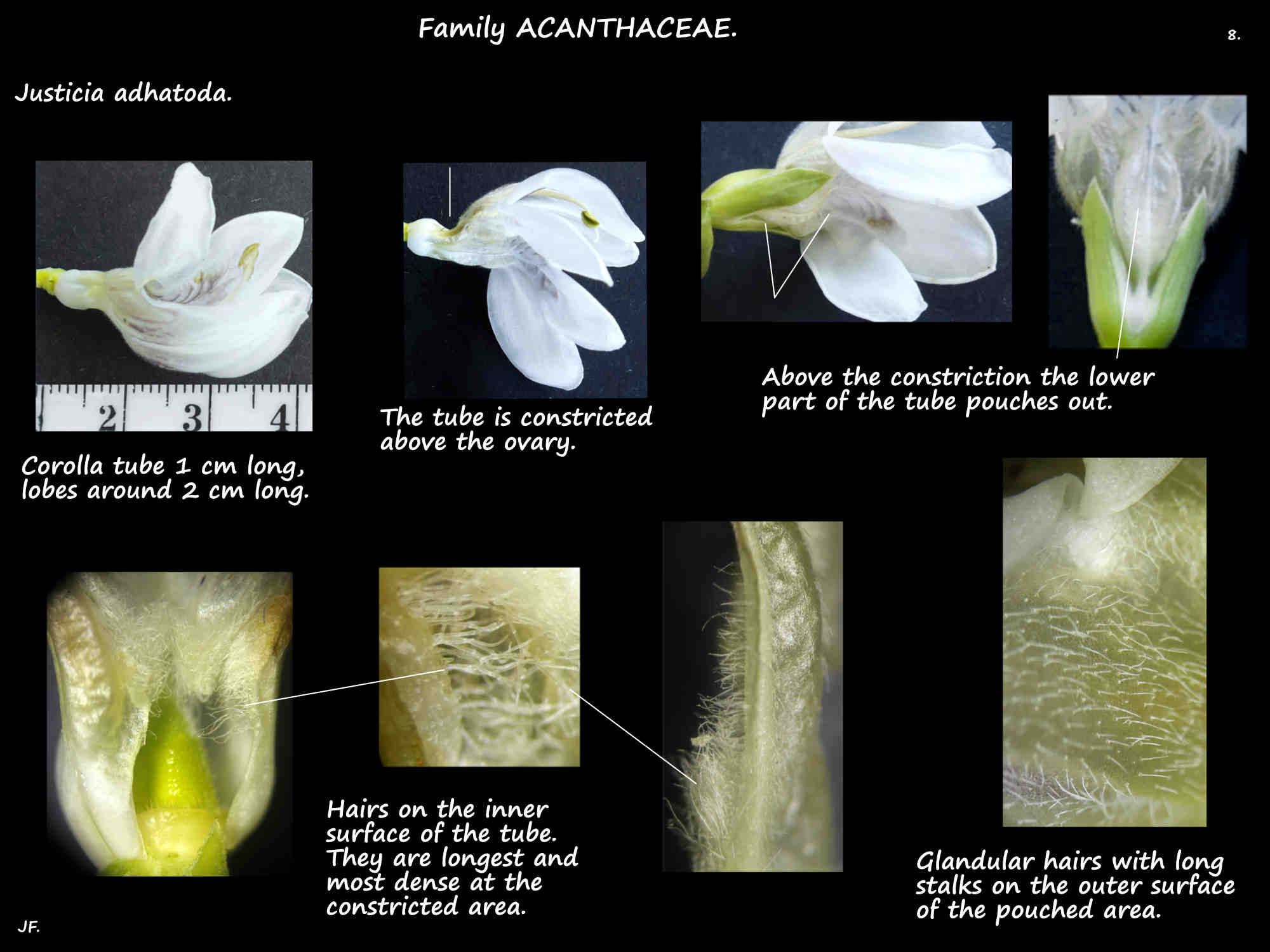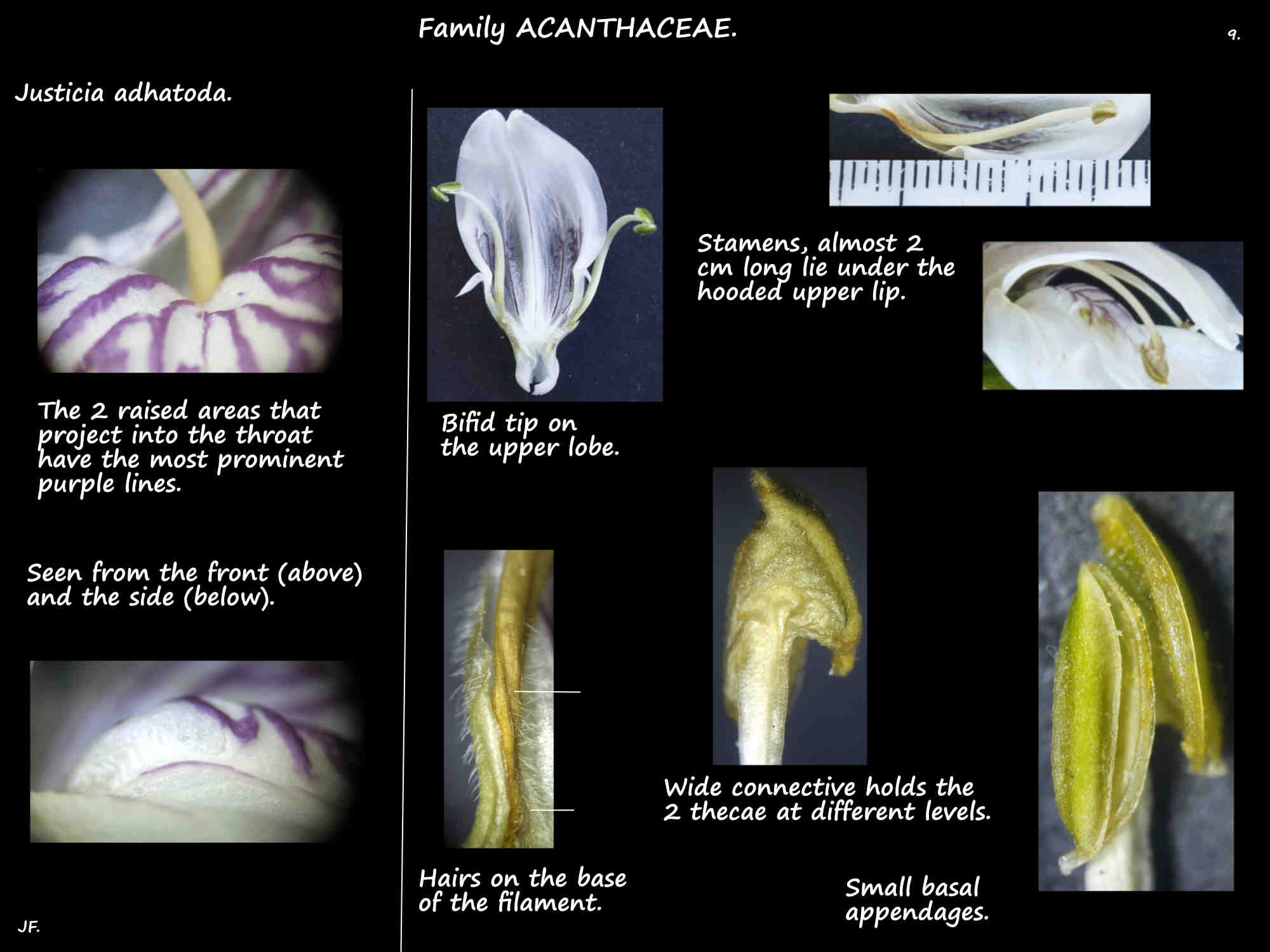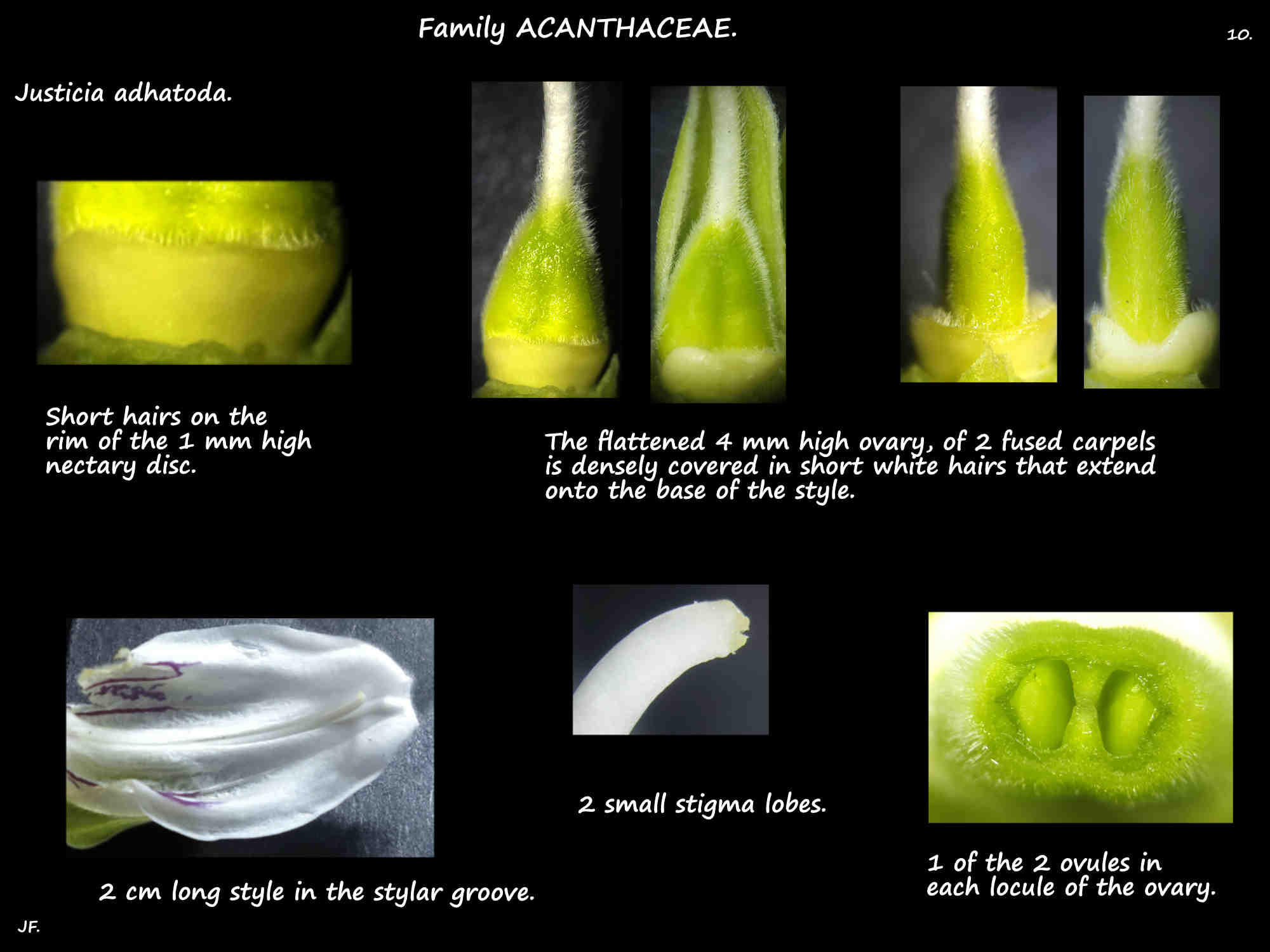Justicia adhatoda.
Malabar nut has been known under numerous names including Adhatoda duvernoia,
Duvernoia adhatodoides, Justicia duvernoi and Adhatoda adhatoda.
They can grow as a shrub or small tree around 2 to 3 m high but they can reach 6 m.
Shrubs have multiple long arching and much-branched stems resulting in a wide crown.
The bark is greyish-brown and the young green twigs are densely covered in hairs.
The nodes are swollen and slightly flattened.
The opposite and decussate leaves are on petioles up to 2 cm long with a groove on the upper surface.
The simple blades can be up to around 15 or 20 (25) cm long and 7 to 8 (15) cm wide.
They are ovate to elliptic with a smooth edge and a pointed tip.
The slightly asymmetric wedge-shaped base forms short wings down the petiole.
The midrib is sunken on the upper surface and larger and more prominent underneath.
Simple hairs are scattered on the upper surface and are denser on the veins on the lower.
There are cystoliths.
Inflorescences are in the axils of the leaves near the branch ends.
They are dense erect unbranched spikes with the lower flowers opening first (racemes).
From 3 to 7 cm long they are on peduncles up to 8 or 10 cm long.
Flowers, on short pedicels are up to 3 cm long.
They are bilaterally symmetric and have parts in 5’s.
Flowers are subtended by paired bracts and bracteoles which are modified leaves.
The bracts are ovate to obovate and 2 to 3 cm long and 1.5 cm wide.
The veins are parallel and around the edge is a narrow white rim.
There are many small white hairs evenly distributed over both surfaces.
Bracts persist, dry and brown around the fruit.
The 2 hairy bracteoles are narrowly lanceolate and slightly shorter than the bracts.
The calyx has 5 green sepals with their bases fused for 1 mm or so.
The oblong lobes are under 1 cm long.
There are small white hairs on both surfaces but mainly the lower and around the edge.
The funnel-shaped corolla tube is up to 1 cm long with a constricted area above the ovary.
Above this the lower part of the tube pouches downwards.
At the top of the tube are 2 lips with 2 lobes in the upper lip and 3 in the lower.
The lobes are up to 2 cm long.
The mostly fused upper lobes form a hood over the stamens.
The 3 lobes in the lower lip are larger.
The lobes are white with a few purple lines along the upper lip.
The lower lip has 2 raised areas in the throat with more purple lines on them.
There are hairs on both surfaces mainly inside the tubular part.
The 2 curved stamens lie along the hooded upper lip.
The white filaments insert into the corolla tube above the constricted area.
There are hairs on the lower section of the filaments.
Each stamen has 2 parallel thecae or pollen sacs held at different levels by a wide connective.
The thecae, with small basal appendages open through long slits.
The pale yellow nectiferous disc around the ovary has short hairs on the rim.
The green ovary, of 2 fused carpels is flattened and densely covered in white hairs.
Each of the 2 locules has 2 ovules.
The long white style lies in a groove along the centre of the upper lip.
The 2 stigma lobes are very small.
The fruit are slightly woody, club-shaped capsules around 2.5 cm long.
They are hairy and mature from green to brown.
Each chamber has 1 or 2 seeds with a retinaculum or jaculator that forcibly expels them.
The 5 mm seeds have one or more ridges on them.
J.F.

